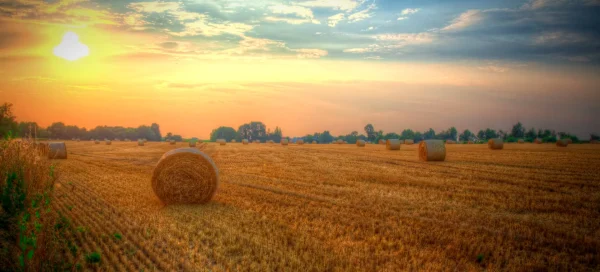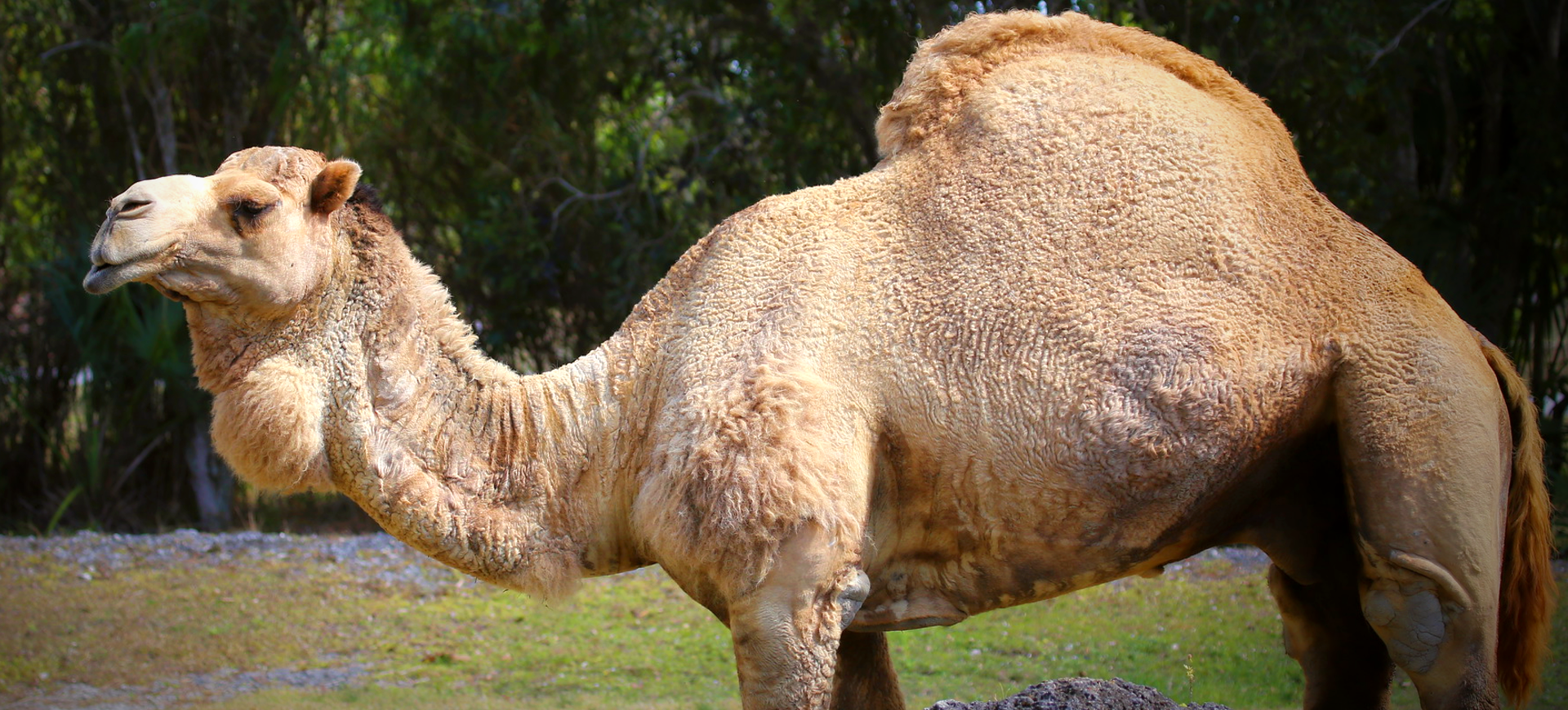Overview
The Bactrian camel (Camelus bactrianus) is a large, two-humped camel native to Central Asia’s arid and semi-arid regions, including the Gobi Desert and the steppes of Mongolia. Known for its incredible adaptations to extreme climates, the Bactrian camel can withstand scorching heat and cold, thriving in some of the harshest environments on Earth. Unlike its single-humped relative, the dromedary camel, the Bactrian camel is uniquely suited for mountainous and cold desert regions. These camels are domesticated in many parts of their range, but a small population of critically endangered wild Bactrian camels (Camelus ferus) also persists in remote areas.
Bactrian camels have been integral to human societies for thousands of years, serving as pack animals, milk, wool, and meat sources and facilitating trade along ancient routes like the Silk Road. Their ability to travel long distances without water makes them invaluable in deserts where resources are scarce. They are known to survive by drinking brackish or salty water, which is unsuitable for most other animals. Domesticated Bactrian camels are widely distributed across Central Asia, while their wild counterparts are restricted to protected areas in the Gobi Desert and China.
The wild Bactrian camel is among the most endangered large mammals, with fewer than 1,000 individuals remaining. Habitat loss, competition with livestock, and hybridization with domesticated camels threaten its survival. Conservation efforts aim to protect its habitat and genetic integrity, while sustainable management practices are in place for the more populous domesticated camels. Together, these efforts ensure the survival of this remarkable species, a cornerstone of Central Asia’s human culture and economy.
Taxonomy
Kingdom
Phylum
Class
Order
Family
Genus
Species
Type
RANGE
Current distribution:
Wild Bactrian camels (Camelus ferus) are now restricted to remote and fragmented parts of the Gobi Desert in China and Mongolia, with small populations in the Taklamakan Desert. They are found in protected reserves like the Great Gobi, A Strictly Protected Area, and the Lop Nur Wild Camel National Nature Reserve. These areas provide a refuge from human encroachment, though their habitats remain threatened by illegal hunting and competition with domesticated livestock. Current population estimates suggest fewer than 1,000 wild Bactrian camels remain, making them critically endangered.
On the other hand, domesticated Bactrian camels (Camelus bactrianus) are widely distributed across Central Asia, including Mongolia, China, Kazakhstan, and Afghanistan. They are used as pack animals, sources of milk and meat, and wool producers in agricultural and rural communities. Their domesticated range extends far beyond the range of their wild counterparts, as they are maintained by human populations in regions with harsh climates. However, interbreeding between wild and domesticated populations poses a genetic threat to the wild species.
Physical Description:
Bactrian camels are large, sturdy animals characterized by their two prominent humps, which store fat that can be metabolized into energy and water during times of scarcity. They are covered in a thick, shaggy coat that provides insulation in cold winters and sheds during the summer to keep them cool. Their coloration ranges from beige to dark brown, with lighter-colored individuals more common in domesticated populations. They have long legs with broad, padded feet that prevent them from sinking into sand or snow, making them excellent travelers across diverse terrains.
The Bactrian camel’s facial features include a long, curved neck, a flat face with wide nostrils that can close completely to block sand, and bushy eyebrows with long eyelashes to protect their eyes from dust and sunlight. Their large, tough mouths allow them to consume thorny and salty vegetation that other animals avoid. Adults stand at an average shoulder height of 5.9 to 7.5 feet (180 to 230 cm) and weigh between 880 and 2,200 pounds (400 to 1,000 kg), with males typically larger and heavier than females. The humps can shrink and sag when the camel’s facamel’sves are depleted, reflecting its nutritional status.

Lifespan: Wild: ~40 Years || Captivity: ~50 Years

Weight: Male: 1,320–2,200 lbs (600–1,000 kg) || Female: 880–1,430 lbs (400–650 kg)

Length: Male: 100–130 in (254–330 cm) || Female: 85–100 in (216–254 cm)

Height: Male: 73–90 in (185–230 cm) || Female: 65–72 in (165–183 cm)

Top Speed: 40 mph (64 km/h)
Characteristic:
Native Habitat:
Bactrian camels are native to Central Asia’s harsh deserts and steppes, including the Gobi Desert, the Taklamakan Desert, and the Mongolian steppe. These regions are characterized by extreme temperature fluctuations, ranging from -40°F (-40°C) in winter to 104°F (40°C) in summer, as well as sparse vegetation and limited water sources. Bactrian camels are perfectly adapted to these conditions, relying on their ability to store fat in their humps, their thick winter coats, and their capacity to tolerate dehydration. Wild Bactrian camels primarily inhabit remote areas with saline water sources and sparse vegetation, such as salt flats and desert basins.
Domesticated Bactrian camels, in contrast, are found across a wider range, including agricultural and urbanized areas where they are used for transport, farming, and milk production. Their presence in human settlements reflects their importance as working animals in arid and semi-arid regions. Habitat degradation from human activities, including mining and overgrazing by livestock, has pushed wild Bactrian camels into increasingly marginal areas. Protected areas like the Great Gobi Strictly Protected Area in Mongolia and the Lop Nur Wild Camel National Nature Reserve in China are critical to the survival of wild populations.
Biomes:
Biogeographical Realms:
Continents:
Diet:
Diet & Feeding Habits:
Bactrian camels are herbivores with a highly adaptable diet, allowing them to survive on various vegetation, including tough, thorny shrubs, dry grasses, and even salty or brackish plants. Their tough mouths and strong digestive systems enable them to consume food that most other animals cannot, such as halophytes (salt-tolerant plants) and low-nutrient forage in arid environments. They are capable of surviving for long periods without food or water, drawing on their fat reserves stored in their humps during times of scarcity. Wild Bactrian camels are known to graze in areas where water sources are highly saline, giving them an advantage over other herbivores.
In captivity and domestication, Bactrian camels are often fed a diet of hay, grains, and fresh vegetables, depending on availability. Their slow metabolism reduces their energy requirements, making them particularly suited to environments with limited food resources. Camels drink large amounts of water when available, consuming up to 30 gallons (114 liters) in a single session, but can survive for weeks without water in extreme conditions. Their efficient water conservation mechanisms include highly concentrated urine and minimal water loss through sweating.
Mating Behavior:
Mating Description:
Bactrian camels have a polygynous mating system. During the breeding season, from late winter to early spring, dominant males compete to access females. To establish dominance, males engage in aggressive displays and fights, often biting, vocalizing, and neck-wrestling. After mating, females experience a gestation period of approximately 13 months and typically give birth to a single calf, though twins are rare. Births generally occur in the spring, when environmental conditions are more favorable for the survival of young calves.
Newborn calves are precocial, standing and walking within hours of birth, essential for survival in the harsh desert environment. They remain dependent on their mothers for milk for the first year of life but begin grazing on vegetation at a few months old. Calves stay with their mothers for up to two years, learning essential survival skills before becoming independent. The long reproductive cycle and low birth rate slow population recovery, particularly for the critically endangered wild Bactrian camels.
Reproduction Season:
Birth Type:
Pregnancy Duration:
Female Name:
Male Name:
Baby Name:
Social Structure Description:
Bactrian camels are social animals that live in herds, typically consisting of one dominant male, several females, and their young. During the breeding season, males become highly territorial and aggressive, competing for access to females through displays of dominance and physical confrontations. Outside the breeding season, male camels may form bachelor groups or live solitary lives. Herds are generally stable, with mothers playing a central role in raising calves.
Communication within herds includes a range of vocalizations, body postures, and chemical signals, particularly during mating. Camels often cooperate in locating food and water sources, which is critical for survival in their harsh environments. Human handlers manage Domesticated camels in groups, who rely on their social nature to maintain cohesion during long treks. Bactrian camels’ strong social bonds and adaptability make them resilient to changing environmental conditions, although their survival ultimately depends on habitat quality and resource availability.
Groups:
Conservation Status:
Population Trend:
The wild Bactrian camel population is critically endangered, with fewer than 1,000 individuals remaining. They are confined to small, isolated regions of the Gobi Desert and nearby areas in China and Mongolia, where they face significant threats from habitat destruction, competition with domesticated camels and livestock, and illegal hunting. Hybridization with domesticated Bactrian camels further threatens the genetic purity of wild populations. Conservation programs aim to monitor and protect these remaining populations through protected reserves and anti-poaching measures.
Domesticated Bactrian camels are much more numerous, with populations spread across Central Asia, where they play a vital role in local economies. Despite widespread use, increasing mechanization and modern transportation methods have reduced their importance in some regions. In addition, overgrazing and mismanagement of resources in areas where domesticated camels are kept can indirectly harm wild populations by degrading shared habitats. Conservationists emphasize the importance of sustainable practices to ensure the coexistence of wild and domesticated populations.
Population Threats:
The primary threats to wild Bactrian camels include habitat degradation caused by mining, livestock overgrazing, and human encroachment into desert ecosystems. These activities reduce the availability of water and food resources and force camels into increasingly marginal areas. Poaching for meat and hides and illegal hunting for sport have further reduced their numbers. Hybridization with domesticated Bactrian camels poses a genetic threat to wild populations, diluting their distinct gene pool.
Climate change is an emerging threat. Rising temperatures and altered precipitation patterns could potentially reduce the availability of water and vegetation in the arid regions where Bactrian camels live. Competition with livestock for scarce resources intensifies as human populations expand into desert areas. Domesticated camels face fewer threats but may suffer from reduced demand in some regions as mechanized transport replaces traditional pack animals. The cumulative impact of these threats makes conservation efforts for wild Bactrian camels particularly urgent.
Conservation Efforts:
Conservation efforts for the wild Bactrian camel focus on habitat protection, anti-poaching measures, and public awareness campaigns. Protected areas such as the Great Gobi Strictly Protected Area in Mongolia and the Lop Nur Wild Camel National Nature Reserve in China provide critical refuges for remaining populations. International collaborations, including the Wild Camel Protection Foundation, work to monitor populations, conduct genetic research, and prevent hybridization with domesticated camels. Local education programs aim to reduce poaching and promote coexistence with local communities.
Captive breeding programs for wild Bactrian camels have been established in facilities like the Almaty Zoo in Kazakhstan, ensuring genetic diversity and raising awareness about the species. Sustainable management of domesticated camels, including limiting their encroachment into protected areas, is essential to reducing competition and hybridization risks. Reforestation and water resource management projects aim to mitigate the impacts of habitat degradation. Long-term success depends on balancing the needs of human communities with the conservation of this iconic species.
Additional Resources:
Fun Facts
- Bactrian camels can drink up to 30 gallons (114 liters) of water in just 13 minutes, replenishing their reserves after long periods of dehydration.
- Their humps store fat, not water, and shrink or sag as fat is used during times of scarcity.
- Bactrian camels have three sets of eyelids and two rows of eyelashes to protect their eyes from sand and dust.
- They can close their nostrils completely to prevent sand from entering during desert storms.
- Wild Bactrian camels are the only mammals that drink salty or brackish water regularly.
- Their thick winter coats can withstand temperatures as low as -40°F (-40°C), while their ability to shed helps them survive summer heat.
- Bactrian camels were central to trade along the ancient Silk Road, carrying goods across Asia.
- They can carry up to 1,000 pounds (450 kg) for long distances, making them essential pack animals.
- Fossil evidence suggests that camels originated in North America before migrating to Asia via land bridges.
- Unlike most mammals, Bactrian camels have oval-shaped red blood cells, which help them retain water and survive dehydration.













